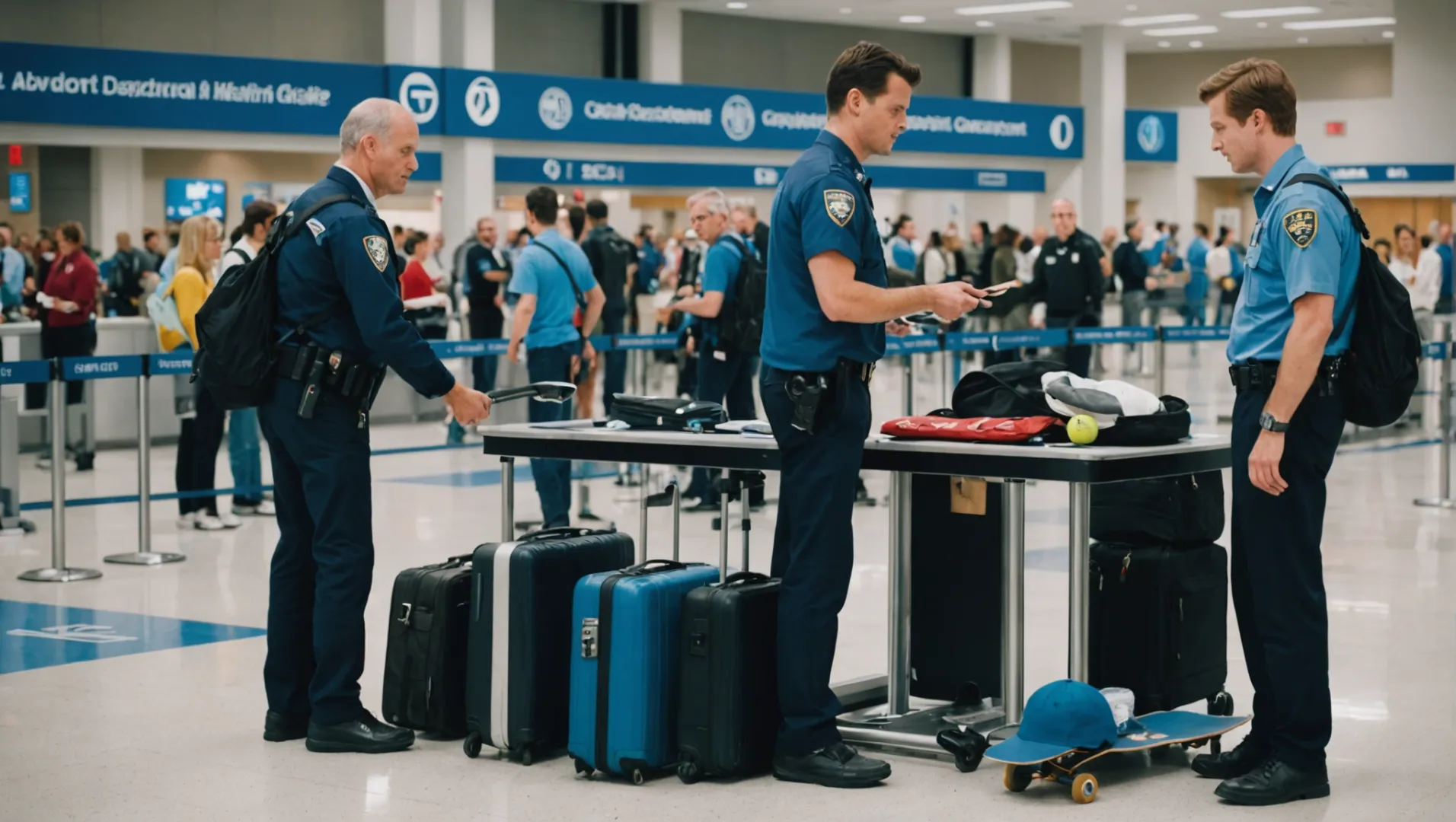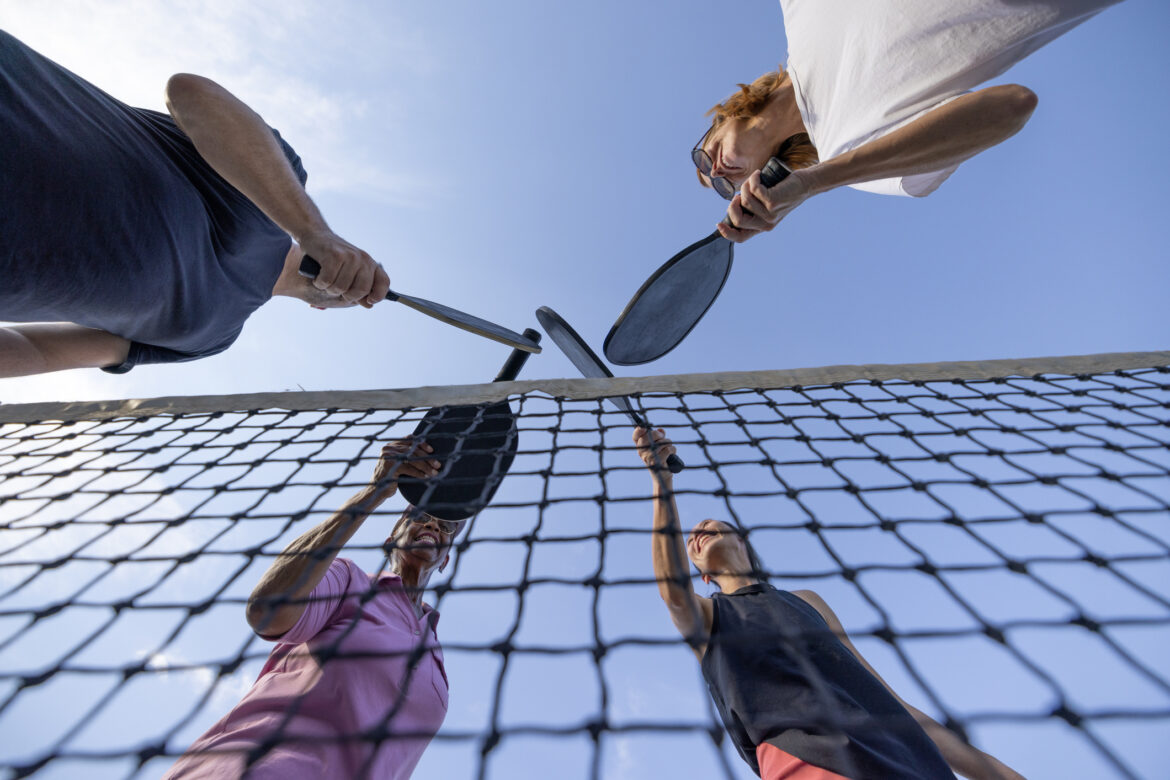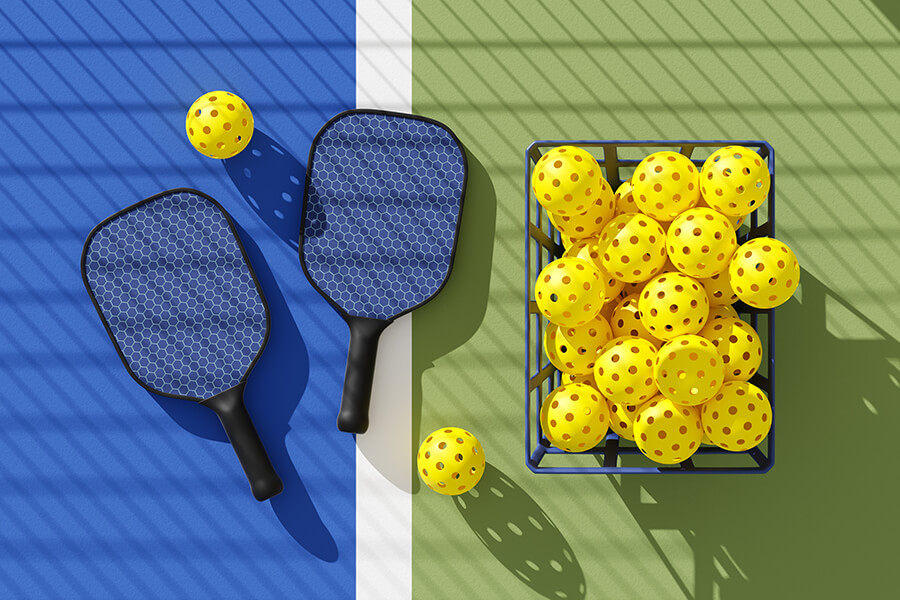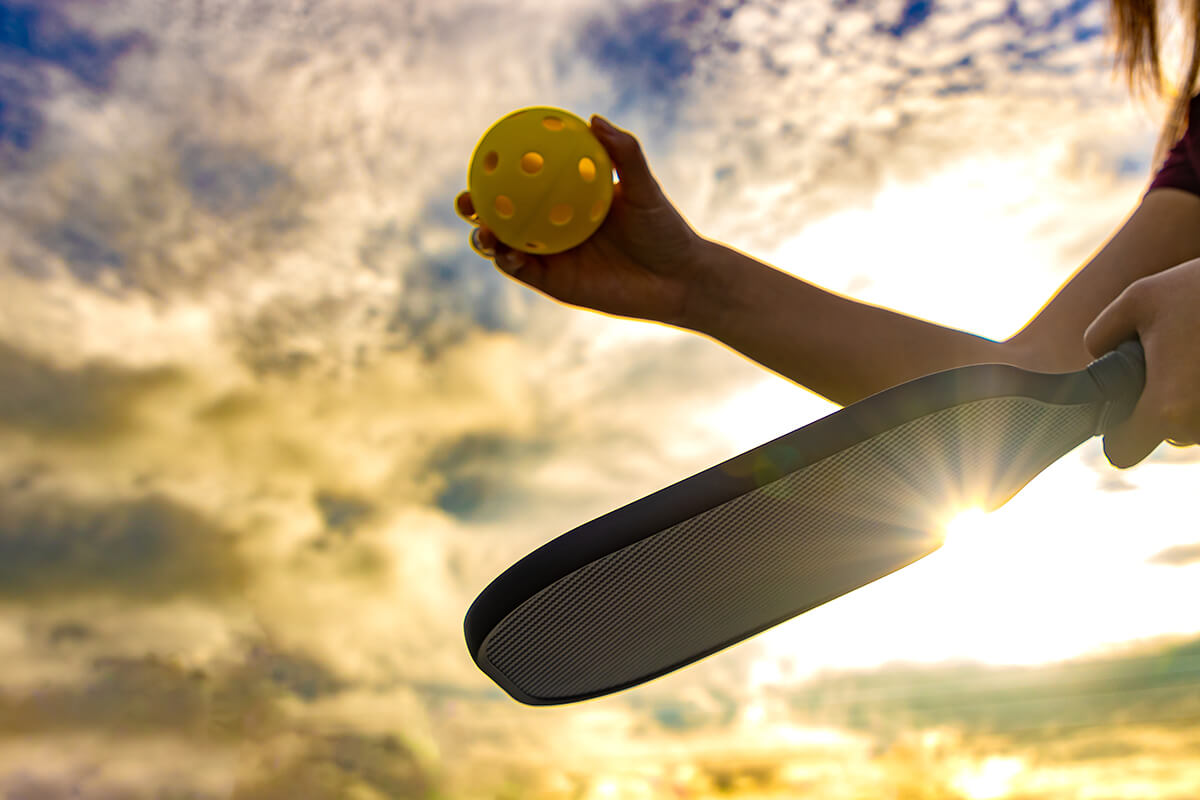Traveling to your next pickleball match but unsure if you can bring your paddle on the plane? Let’s find out!
Yes, you can take a pickleball paddle on a plane. The TSA permits pickleball paddles in both carry-on and checked baggage. However, it’s essential to check with your airline for any specific restrictions or guidelines they may have.
While knowing that TSA allows pickleball paddles is a good start, each airline might have its nuances. In this article, we delve deeper into airline-specific regulations, packing tips, and what to consider for international travel to ensure you’re fully prepared.
Pickleball paddles are allowed in carry-on luggage.True
TSA permits pickleball paddles in both carry-on and checked bags.
What Are the TSA Regulations for Sports Equipment?
Are you curious about how TSA regulations affect your sports equipment when flying? Let’s explore!
The TSA permits most sports equipment in both carry-on and checked luggage, but specific guidelines vary based on the item. For instance, while pickleball paddles are allowed in both types of baggage, larger items like skis or golf clubs must be checked. Always verify with the TSA and your airline for updates.

Overview of TSA Regulations for Sports Equipment
The Transportation Security Administration1 (TSA) has established clear guidelines regarding the transportation of sports equipment on airplanes. These guidelines aim to ensure safety while accommodating travelers’ needs to carry sporting goods.
Generally, the TSA allows passengers to carry smaller sports items in both carry-on and checked luggage. However, larger items, due to their size and potential to obstruct or cause harm, often require special handling and must be checked.
| Type of Sports Equipment | Carry-On | Checked Baggage |
|---|---|---|
| Tennis Rackets | Yes | Yes |
| Baseball Bats | No | Yes |
| Skateboards | Maybe* | Yes |
| Fishing Rods | Yes** | Yes |
*Skateboards: Check with the airline for size restrictions.
**Fishing Rods: May be subject to length limitations.
What is Permitted in Carry-On vs. Checked Baggage?
For items like pickleball paddles or tennis rackets, travelers can comfortably pack them in their carry-on luggage, saving time upon arrival. However, equipment like golf clubs, which may be bulky and potentially dangerous if mishandled, must be checked in.
Factors Influencing TSA Decisions
TSA‘s decisions are influenced by the potential threat level posed by an item. This is why certain sporting equipment, such as baseball bats or hockey sticks, are prohibited from being carried into the passenger cabin.
Staying Updated with TSA Guidelines
Since TSA policies can evolve, it’s crucial to stay informed about the latest regulations. Before traveling, it’s advisable to visit the official TSA website2 for the most current information on what sports equipment is permitted.
By understanding TSA regulations for sports equipment, travelers can better prepare and avoid surprises at airport security checkpoints. Whether you’re carrying a pickleball paddle or a set of skis, knowing these guidelines ensures a smoother travel experience.
Pickleball paddles are allowed in carry-on luggage.True
TSA permits pickleball paddles in both carry-on and checked baggage.
Baseball bats can be carried in cabin luggage.False
TSA requires baseball bats to be checked due to potential danger.
How Do Different Airlines Handle Pickleball Paddles?
Navigating airline policies for pickleball paddles can be tricky. Here’s what you need to know.
Airlines generally allow pickleball paddles in carry-on and checked luggage, but rules can vary. Always verify with your specific airline to avoid any surprises at the airport. Some airlines may have size restrictions or additional fees, so checking their policy beforehand is crucial.

Understanding Airline Policies
Airlines have varied policies regarding sports equipment, including pickleball paddles. While the TSA regulations3 allow paddles in both carry-on and checked bags, airlines might impose their own rules. Let’s explore how some major airlines handle these.
Major U.S. Airlines
-
American Airlines: Generally permits pickleball paddles in both carry-on and checked luggage. However, they advise checking the dimensions to ensure they fit within the standard luggage size restrictions.
-
Delta Airlines: Allows paddles as part of your standard carry-on or checked baggage. No special fees apply unless it exceeds size limits.
-
United Airlines: Accepts pickleball paddles without additional fees, provided they adhere to the overall baggage guidelines.
Here’s a quick overview:
| Airline | Carry-On | Checked | Additional Fees |
|---|---|---|---|
| American Airlines | Yes | Yes | Possible if oversized |
| Delta Airlines | Yes | Yes | No |
| United Airlines | Yes | Yes | No |
International Carriers
When traveling internationally, it’s crucial to check with your airline as rules may differ significantly. For instance, British Airways4 allows sports equipment like pickleball paddles as part of your standard baggage allowance but advises contacting them directly for oversized items.
Tips for Checking Airline Policies
- Check Online: Most airlines have detailed baggage policies on their websites.
- Call Ahead: When in doubt, contact customer service to confirm.
- Consider Fees: Be aware of potential oversize or overweight charges.
- Plan for Layovers: If your flight includes multiple carriers, verify each airline’s policy.
By understanding these nuances and preparing accordingly, you can travel with peace of mind knowing your pickleball paddle is compliant with airline regulations.
American Airlines charges fees for oversized pickleball paddles.True
American Airlines may charge fees if pickleball paddles exceed size limits.
Delta Airlines prohibits pickleball paddles in carry-on luggage.False
Delta Airlines allows pickleball paddles in both carry-on and checked bags.
How Can You Ensure Your Pickleball Paddle Stays Safe During Travel?
Packing your pickleball paddle properly can prevent damage and ensure it’s ready for your next match.
To pack your pickleball paddle safely, use a protective cover, secure it within your luggage, and consider a hard-shell case for added protection. Ensure the paddle is cushioned among clothes or other soft items to minimize impact during travel.

Use a Protective Paddle Cover
One of the simplest ways to protect your pickleball paddle is by using a dedicated cover. These covers are designed to fit snugly over your paddle, shielding it from scratches and minor impacts. When shopping for a cover, look for options that offer padding and are made of durable materials. You can easily find these covers in sports stores or online retailers.
Secure the Paddle Within Your Luggage
Once your paddle is covered, place it in a strategic spot within your luggage. Ideally, it should be positioned between layers of clothing or other soft items. This positioning helps absorb any shocks the paddle might encounter during handling or turbulence. If you’re traveling with a duffel or gym bag, try to fit the paddle along the side, making sure it’s not bending or under pressure from other items.
Consider a Hard-Shell Case
For those particularly concerned about their equipment, investing in a hard-shell case might be worthwhile. These cases provide excellent protection against harsh impacts and are especially useful if you often check your luggage rather than carry it on. While they can be bulkier, the peace of mind they offer is invaluable.
Additional Tips for International Travel
When traveling internationally with your pickleball gear, keep in mind that regulations may vary by country. It’s advisable to check specific airline policies5 regarding sports equipment to avoid any last-minute surprises. Furthermore, consider carrying a copy of the TSA guidelines in case you need to clarify any misunderstandings with airport security.
A Quick Checklist
| Item | Check |
|---|---|
| Paddle Cover | ✅ |
| Soft Cushioning Items | ✅ |
| Hard-Shell Case (Optional) | ✅ |
| Airline Policy Printout | ✅ |
Taking these precautions ensures that your pickleball paddle arrives in top condition, ready for action. Remember, a well-cared-for paddle not only performs better but also lasts longer.
A hard-shell case is optional for paddle travel.True
While optional, a hard-shell case offers superior protection during travel.
Paddle covers should be made of durable materials.True
Durable materials in paddle covers help protect against scratches and impacts.
What Should You Know About International Travel with Pickleball Gear?
Planning an international trip with your pickleball gear? Here’s what you need to know before you go!
When traveling internationally with pickleball gear, research the destination’s customs regulations, consider investing in a sturdy travel bag, and check for airline-specific sports equipment policies. Knowing these details can prevent unexpected hassles during your journey.

Understanding Customs Regulations
Before jetting off, it’s crucial to understand the customs regulations6 of your destination country. Some nations have strict rules regarding sports equipment, and being informed can save you from potential headaches at customs checkpoints.
Choosing the Right Travel Bag
Investing in a high-quality travel bag is essential for protecting your pickleball gear. Consider options with reinforced padding and lockable zippers. Some bags are specifically designed for sports equipment, offering compartments that keep your paddles, balls, and accessories secure.
Airline-Specific Sports Equipment Policies
Each airline has its own set of rules for carrying sports equipment. While most allow pickleball paddles as part of carry-on or checked baggage, some may charge additional fees. It’s advisable to check the airline’s website or contact their customer service for detailed information on their policies.
Insurance and Safety Measures
Consider obtaining travel insurance that covers sports equipment. This can provide peace of mind in case of loss or damage during your travels. Additionally, labeling your gear with your contact information can aid in recovery if it gets misplaced.
Cultural Considerations and Local Facilities
Research local pickleball communities or clubs at your destination. Engaging with local players can enrich your experience and provide insights into the cultural nuances of the game in different regions. Plus, knowing where to play ahead of time ensures you’ll spend more time on the court and less time searching for facilities.
Pickleball paddles are always allowed as carry-on items.False
Airline policies vary; some may restrict or charge for sports gear.
Customs rules for sports gear differ by country.True
Each country has unique customs regulations affecting sports equipment.
Conclusion
By understanding TSA guidelines and airline-specific rules, you can ensure a smooth journey with your pickleball paddle. Always double-check policies before traveling to avoid surprises. Happy travels and enjoy your game!
-
Discover comprehensive guidelines for flying with sports gear.: Sports equipment that can be used as a bludgeon (such as bats and clubs) is prohibited in the cabin of the plane and must be transported in your checked baggage … ↩
-
Ensure your items comply with current TSA rules before you fly.: What Can I Bring? · Aerosol Insecticide · Air Mattress with Built-in Pump · Airbrush Make-up Machine · Alcoholic beverages · Alcoholic beverages over 140 proof. ↩
-
Check TSA’s official stance on carrying sports equipment.: Pickleball Paddle: Carry On Bags: Yes Checked Bags: Yes For more prohibited items, please go to the ‘What Can I Bring?’ page. ↩
-
Find specific guidelines for carrying sports gear on British Airways.: Find out if you can bring your sporting equipment on board with you, check it in to your baggage allowance or if you need to take extra steps before you travel. ↩
-
Check airline-specific rules for carrying sports gear safely.: When traveling with any sports equipment, the maximum linear size (length + width + height) is 115 in / 292 cm and the maximum weight is 70 lbs / 32 kgs, … ↩
-
Avoid surprises by learning about customs rules for sports gear.: Rules, exceptions and packing instructions apply to special items. The maximum weight for most items is 100 lbs / 45 kgs (some exceptions apply). ↩






